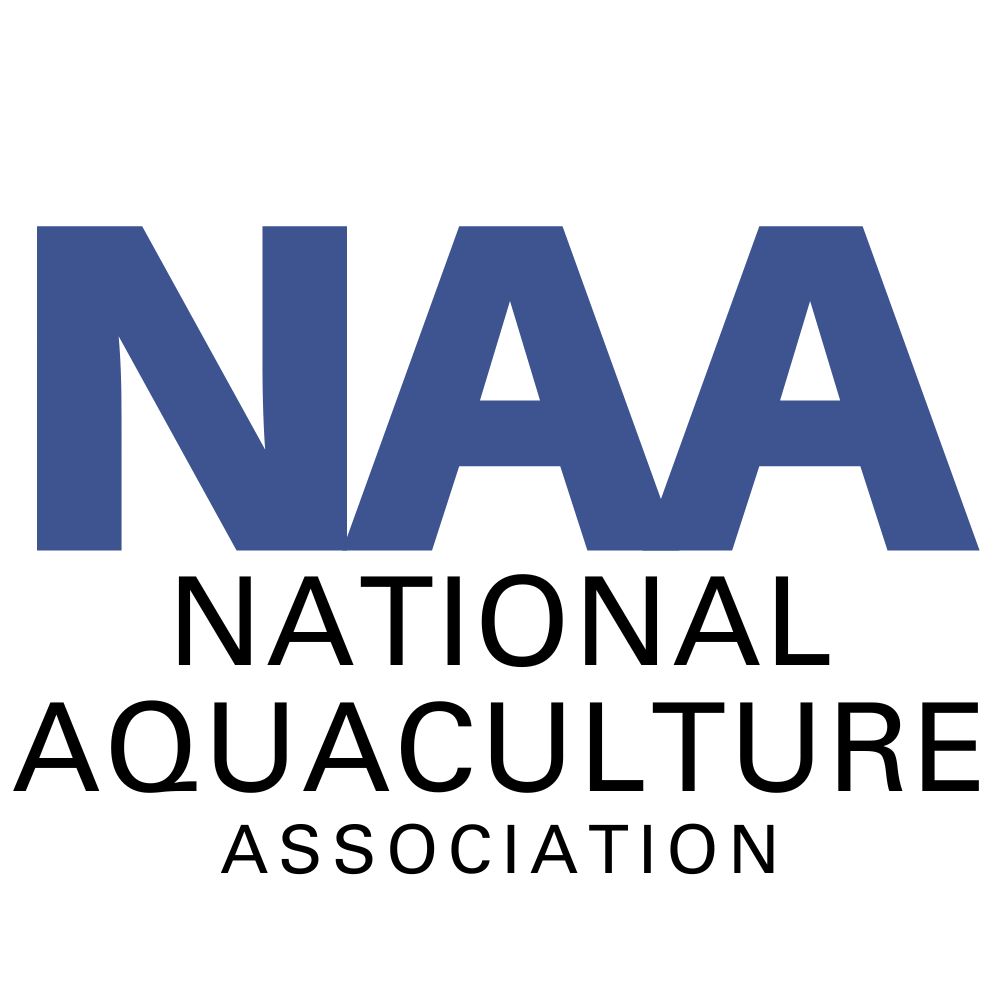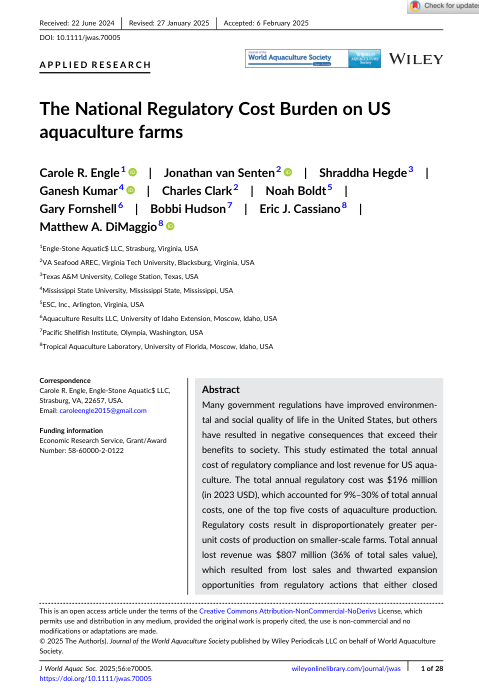
Costs and Recommendations Summarized to Solve the National Aquaculture Regulatory Cost Burden
In a long-anticipated summary analysis, the team of economists and extension specialists that quantified the U.S. aquaculture regulatory cost burden have published a peer-reviewed paper estimating total costs and offering their recommendations to address burdensome regulatory complexity going forward. Their analysis entitled, The National Regulatory Cost Burden on US Aquaculture Farms, can be read or downloaded by clicking here. The authors noted:
Many government regulations have improved environmental and social quality of life in the United States, but others have resulted in negative consequences that exceed their benefits to society.
This study estimated the total annual cost of regulatory compliance and lost revenue for US aquaculture. The total annual regulatory cost was $196 million (in 2023 USD), which accounted for 9%–30% of total annual costs, one of the top five costs of aquaculture production.
Regulatory costs result in disproportionately greater per-unit costs of production on smaller-scale farms. Total annual lost revenue was $807 million (36% of total sales value), which resulted from lost sales and thwarted expansion opportunities from regulatory actions that either closed access to existing markets, forced reduced scales of production, or prevented attempts to expand production to meet existing demand for the farm's products.
Accounting for multiplier effects, lost economic contributions were $1.4 billion annually, with >8,000 jobs lost nationally from farms alone, not including associated supply chain partners.
Well-designed regulations made use of the best available science, participatory approaches to rulemaking, sunset clauses for removal of outdated regulations, and market-based approaches. Pathways identified to improve regulatory efficiency included:
- Sunset clauses for each rule.
- Environmental stewardship reward incentives (i.e., reduced testing frequency for farms with records of compliance).
- Standardized fish health testing requirements of sample size, farm-wide rather than lot testing, testing the most susceptible species/life stages.
- Non-lethal, multi-pathogen testing methods.
- Farm compensation for reverse externalities of avian predation.
- Appropriate risk management by experts to manage aquatic invasive species and pathogens.
- Training in aquaculture science, current farm practices, and appropriate, consistent, regulatory actions.
- Engagement with independent experts and producers throughout rule-making.
- Establishment of transparent appeals processes for farmers.
- Concurrent, not sequential review of permit requests by agencies.
- Long-term aquaculture literacy programs.
- An efficient, streamlined permitting and regulatory framework for mariculture.
To access the author’s nine peer-reviewed papers quantifying regulatory costs that contributed to their summary paper, click on National Aquaculture Association - U.S. Aquaculture Regulations.

